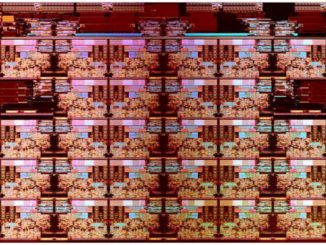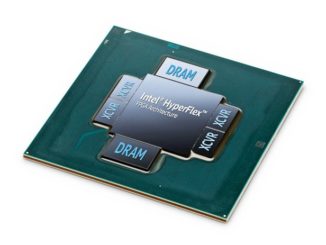
To give hungry customers a high quality, gourmet AI experience new and exotic recipes are being constructed in a race to dream up ever more exciting and tasty concoctions from traditional software and hardware staples.
Over at Intel, AI is clearly the highlight of its current tasting menu. Intel has announced a new set of AI offerings that use associative memory learning and reasoning based on products from Saffron Technology, which Intel carried home from the market back in 2015 for an undisclosed sum.
Saffron adds an integrated software stack to the expanding portfolio of AI hardware, from traditional Xeon processors through to a variety of other bespoke technologies resulting from multiple acquisitions in the AI space that Intel has made over the last few years. Nervana NNP, Intel Altera FPGAs, and Movidius tech each provide multiple hardware platforms forming a proverbial mirepoix to underpin their AI menu. The game plan here is to not only provide end-to-end custom silicon, from more traditional data center applications, but also reach out to the edge with advanced sensing and to also have it all cooked up and blended together with some brand new and appetizing software spice.
Gayle Sheppard, vice president and general manager of the Saffron AI Group at Intel spoke about what is unique about the Saffron approach. “Saffron AI simulates a human’s natural ability to learn, remember, and reason in real time. It uses associative memory learning and reasoning to analyze structured and unstructured text datasets to find hidden patterns, trends, and similarities.” This comment had our interest piqued, anything that can simulate a human’s natural ability to learn has to contain some very seriously powerful software. What exactly is going on behind the scenes here?
History Of Saffron
Saffron’s roots date back to 1999 and are based on work by Manuel Aparicio and James Fleming on associative memories and intelligent agent development. Eighteen years ago, the US military also became interested in the pair with then national security advisor, Admiral John Poindexter, joining Saffron’s board to focus on applying its technology to the fields of national security and intelligence.
How does Saffron actually work today? At a high level, Saffron mainly provides the secret ingredient and technology to be able to unify and connect billions of data points from very disparate data sources. It takes either structured or unstructured source data and then stores the connections between the source data in a large associative memory store. Once stored, users can then interact with this associative memory base to use it to form new questions of against the data. We asked Sheppard exactly how big the data is that they manage in terms of pure terabytes for example, the question was deflected somewhat with the response: “You need to think about the number of specific data points and the complexity of those interactions, it is not just about the amount of raw storage per se. Saffron can manage billions of data points.”
To do this, Saffron has split the overall problem into two pieces, constructing a pair of unique applications, one called “Similarity Advisor” and the other “Classification Advisor.” When combined, they are best suited to help customers focus on instrumenting their review process for issue tracking, specifically around issue resolution in manufacturing and engineering, as an example complex aviation use cases and issue tracking bubbles up to the surface.
The Similarity Advisor effectively finds the closest match to an issue under review by looking across both resolved and currently open cases. It then identifies best possible paths to resolution by looking at the previous cases and surfacing any duplicates in the data to reduce backlogs. The Classification Advisor then automatically classifies this dataset of work issues into predefined categories, be they either regulator mandated or self-defined, which then in turn speeds up and increases the potential for reporting accuracy in operations planning.
The sweet spot for Saffron’s network of networks approach does appear to lie at the heart of issue tracking and resolution. Think specifically of aviation or manufacturing and engineering use cases, with countless thousands of interactions between complex mechanicals, software, systems and humans. For example, solving quality and maintenance issues across a fleet of aircraft falls right into their wheelhouse. Multiple data attributes are often attached to issues, be they human interactions, text logs or automated machine and sensor output each interaction adds additional data and contribute to often extensive issue logs. Aircraft component failure is a potentially serious life and safety concern, so for example being able to know a priori that possible component failure based on previously experienced issues that are each being noted independently in your knowledge base across tens of thousands of unique aircraft is particularly compelling. It is important, not only from a return on investment standpoint alone, but the more obvious real world life and safety concerns to correlate any prospective materials and components issues with currently observed outcomes.
Improving Software Testing
A separate but recent collaboration was highlighted with Accenture, which coupled Saffron with its “Touchless Testing Platform” and gives an additional use case outside of traditional aviation and manufacturing to that of automatic software testing and software development lifecycle. Kishore Durg, senior managing director, growth and strategy and global testing services lead for Accenture, said: “Testing is transforming into quality engineering where applied intelligence is at the core of driving productivity and agility.”
What we think Durg means by this, is that they are applying AI directly to the entire testing infrastructure. By surfacing what they call “tribal knowledge” as data and then mapping this, they can gain insights into previous issues, for example, how they were resolved, who resolved them and what information was needed to actually resolve them.
Accenture states that by applying a suite of techniques, they can help reduce over-engineering efforts, and save anywhere from 30 percent to 50 percent of wasted time and effort. To be clear, Saffron is but only one component part of the Touchless Testing Platform. The platform is itself comprised from an agglomeration of multiple pieces of software and technology ranging from open source, commercial and in-house Accenture proprietary tools and algorithms to glue it together. Malika Fernandes, AI lead for innovation for global testing at Accenture, said that they are “redefining testing.” AI software is clearly now having to become increasingly more joined up and integrated in order to provide additional value to customers.
Networks Of Networks
In asking Sheppard if Saffron achieves better results from all of this agglomerated and unstructured data by application of what have been traditionally termed consensus networks, or jury based applications, the response was that Intel prefers to call the system “knowledge unification.” Effectively unifying and combining the outputs across multiple neural network hardware and software systems to give better accuracy and insight. Sheppard also added that this aspect of unification is currently missing for many approaches right now, and that it isn’t specifically a consensus technique but it does provide a level of unification of Intel’s compute offerings by effectively giving the ability to join up all of their disparate in-silico systems, software and data.
This whole idea of a “networks of networks” approach appears to be the current focus of many within the industry right now. As we have observed before here at The Next Platform, software may also very well start writing software, it also appears that networks are helping to steer and guide the output of other networks as also becoming another new technique in an ever increasing set of real world of issue tracking applications. So in summary, it is fair to say that for these modern more exotic AI recipes, folks are now finally starting to be really cooking with gas.






Thank you Saffron and your prime software developer, Jim Fleming, who worked with Intel for three years after its acquisition in 2015, to help integrate Saffron’s technology into Intel’s going forward.